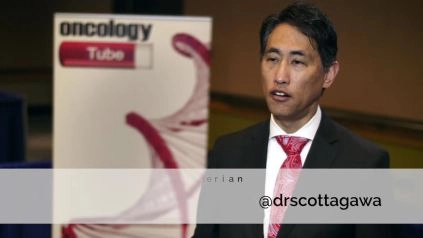Scott Tagawa MD @drscottagawa Of Weill Cornell Medicine and NewYork-Presbyterian Discusses Targeting PSMA: Patients That Have At Least One Bright Image Tend To Have A Better Chance At Responding.
BACKROUND:
Prostate surface membrane antigen (PSMA) is usually overexpressed in PC and is enriched in castration-resistant tumors. PSMA-TRT is of increasing interest to the field. Many in the field of theranostics have assumed that PSMA uptake on imaging is a pre-requisite for response. We have conducted a number of trials which have incorporated PSMA imaging, but have not selected patients for treatment based upon imaging results and performed an analysis examining the relationship between imaging and response.
METHODS:
Men with mCRPC had either planar radiolabeled J591 imaging (111In-J591 and/or 177Lu-J591) or 68Ga-PSMA11 PET/CT. Visual scores were assigned based upon PSMA uptake in tumors compared to liver uptake and scored on a 0-4 scale. Imaging scores were associated with PSA decline (?30%, ?50%) using Cox regression analysis. As several studies were dose-escalation in nature with prior demonstration of dose-response, we controlled for dose administered.
RESULTS:
216 men with metastatic CRPC, median PSA 72.45ng/dl, were treated with PSMA-TRT as follows: 177Lu-J591 (n=136), 177Lu-PSMA-617 (n=38), Lu-J591 + Lu-PSMA-617 combination (n=6), 225Ac-J591 (n=7), 90Y-J591 (n=29). 116 (53.7%) pts received low dose and 100 (46.3%) high dose as previously defined in the individual studies. 55 (25.5%) pts had low PSMA expression by imaging (VS 0-1) whereas 161 (74.5%) had high PSMA (VS 2-4). High PSMA expression was associated with more frequent PSA decline (?30%: 39.2 vs 17.9% p=0.003; ?50%: 27.5 vs 8.9% p=0.004). When controlling for dose level, this association remained significant for low (?30%: 25 vs 8.6% p=0.04) and high doses of radionuclide therapy (?50%: 34.9 vs 9.5% p=0.02). 13 (6%) pts with no PSMA uptake (VS=0) had PSA declines.
CONCLUSIONS:
This is the first study to formally analyze response to PSMA-TRT by PSMA imaging expression in an unselected patient population. The level of PSMA expression measured by imaging is associated with the chance of response. However, a subset of patients without any significant PSMA uptake on imaging did demonstrate response to PSMA-TRT, indicating that imaging cannot exclude all patients that might benefit. Clinical trial information: NCT03545165, NCT03276572, NCT03042468, NCT02552394,

